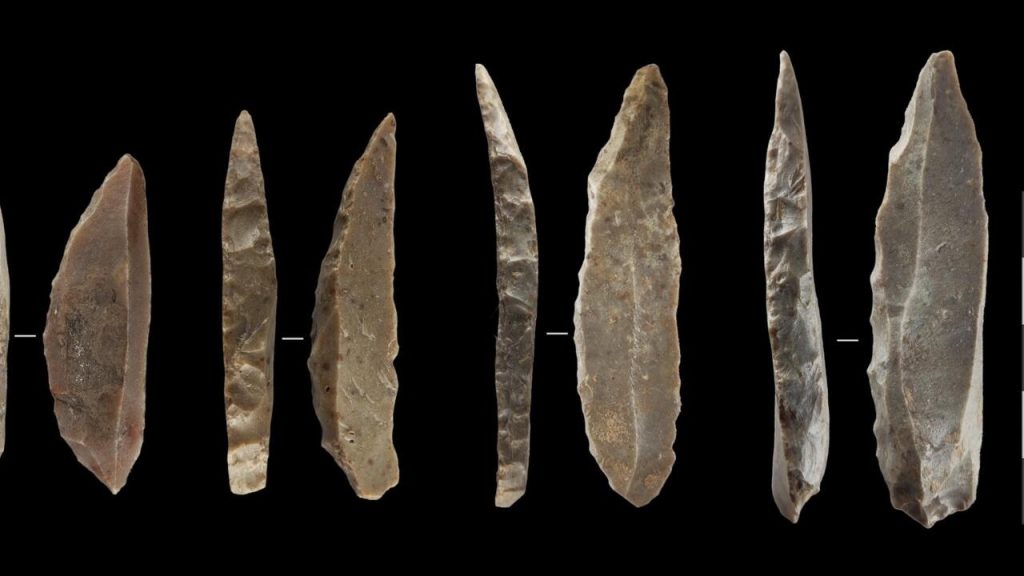issued in: the average:
Paris (AFP) – Modeling research Thursday suggested that Neanderthals and humans lived side by side in France and northern Spain for as long as 2,900 years, giving them plenty of time to learn from each other or even breed with each other.
While the study, published in Scientific Reports, did not provide evidence that humans directly interacted with Neanderthals about 42,000 years ago, previous genetic research has shown that they must have at some point.
Research by Swedish paleontologist Svante Papu, winner of the Nobel Prize in Medicine last week, helped reveal that people of European descent – and nearly everyone around the world – had a small percentage of Neanderthal DNA.
We know that humans and Neanderthals “met and merged in Europe, but we have no idea in which specific regions this actually happened,” said Igor Djakovic, a doctoral student at Leiden University in the Netherlands and lead author of the new study.
Exactly when this happened also proved elusive, although previous fossil evidence suggests that modern humans and Neanderthals walked the earth at the same time for thousands of years.
To learn more, the Leiden-led team looked at radiocarbon dating of 56 artifacts — 28 each of Neanderthals and humans — from 17 sites across France and northern Spain.
The artifacts included bones as well as distinctive stone knives believed to have been made by some Neanderthals in the area recently.
Then the researchers used Bayesian modeling to narrow down the possible time ranges.
‘Not really extinct’
Then they used linear optimization, a new modeling technique they adapted from biological conservation science, to get the best estimate of the life time of the last Neanderthals in the area.
The “basic assumption” of this technique, Djakovic said, is that we are unlikely to ever discover the first or last members of an extinct species.
“For example, we will not find the last woolly rhinoceros,” he told AFP, adding that “our understanding is always divided into pieces.”
Modeling found that Neanderthals in the area became extinct between 40,870 and 40,457 years ago, while modern humans first appeared around 42,500 years ago.
This means the two species lived side by side in the region between 1,400 and 2,900 years ago, the study said.
During this time, Djakovic said, there are indications of a “great diffusion of ideas” by both humans and Neanderthals.
He said the period “was associated with fundamental shifts in the way people produced material culture” such as tools and ornaments.
There has also been a “very sharp” change in artifacts produced by Neanderthals, he added, which are beginning to look more like those made by humans.
Given changes in culture and evidence in our genes, the new timeline could bolster a groundbreaking theory of the end of Neanderthals: interbreeding with humans.
Breeding with more humans could mean that over time, Djakovic said, “Neanderthals were effectively engulfed in our genetic pool.”
“When you combine that with what we know now – that most people living on Earth have Neanderthal DNA – you can make an argument that they never became extinct, in a sense.”
© 2022 AFP

“Amateur organizer. Wannabe beer evangelist. General web fan. Certified internet ninja. Avid reader.”






More Stories
Boeing’s long-awaited Starliner is ready for its first test flight to the International Space Station
Starlink – Starliner dual head? SpaceX and Boeing Starliner target on Monday
The Starliner test mission is well underway, and the rocket is on the launch pad